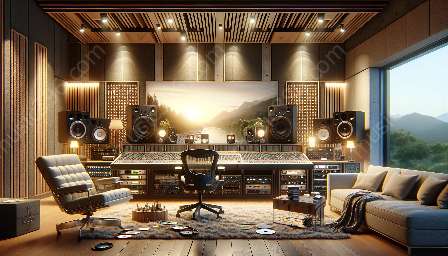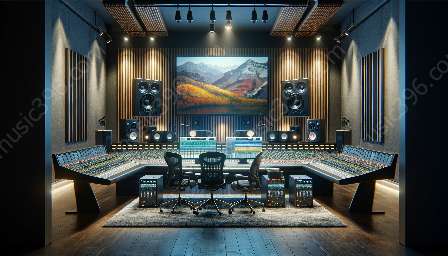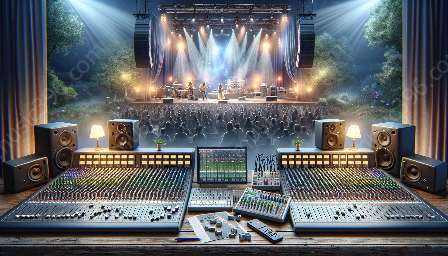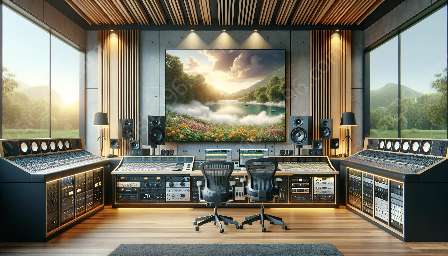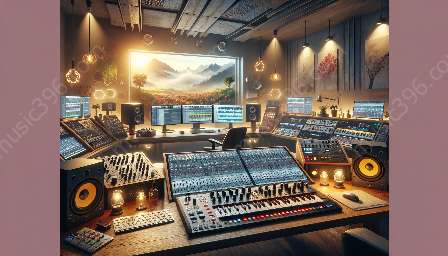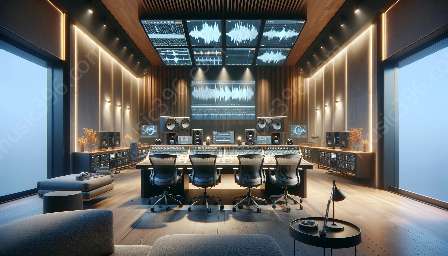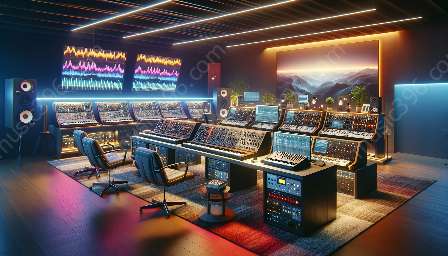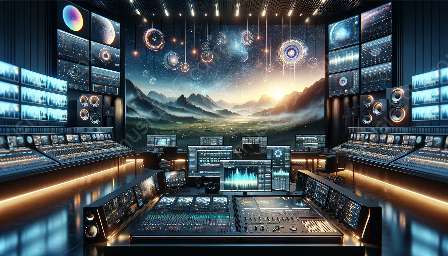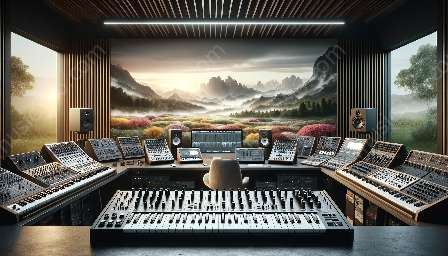Sound mixing and editing play a crucial role in creating a captivating and immersive listening experience for music enthusiasts and audiophiles. In this comprehensive guide, we will delve into the intricacies of sound mixing and editing, exploring how these processes are compatible with CD and audio formats, and how they contribute to the world of music and audio production.
Understanding Sound Mixing and Editing
Sound mixing involves the process of combining different audio tracks to create a unified and harmonious sound. It encompasses adjusting various elements such as volume levels, panning, and equalization to achieve the desired sonic balance. On the other hand, sound editing focuses on manipulating and refining individual audio segments to enhance the overall quality and coherence of the sound.
Tools and Techniques
Professional sound mixing and editing are facilitated by a myriad of tools and techniques, ranging from digital audio workstations (DAWs) to hardware-based mixing consoles. DAWs such as Pro Tools, Logic Pro, and Cubase provide versatile platforms for recording, editing, and mixing audio tracks, offering a wide array of built-in effects and signal processing tools. Additionally, hardware-based solutions like mixing consoles and outboard gear offer tactile control and analog warmth, catering to the preferences of seasoned engineers and producers.
When it comes to CD and audio compatibility, the tools and techniques used for sound mixing and editing should ensure high-fidelity audio reproduction. This includes adhering to specific audio formats and bit depths to optimize the audio quality for CD production and digital distribution.
The Process of Sound Mixing and Editing
The process of sound mixing and editing entails several key steps, starting from the initial recording or acquisition of audio material. This could involve tracking live instruments, capturing vocals, or sampling sounds from various sources. Once the audio material is obtained, the editing phase begins, where imperfections, unwanted noise, and timing issues are addressed to prepare the tracks for mixing.
During the mixing stage, the audio engineer meticulously balances the various elements of the mix, adjusting the levels, applying effects, and creating spatial depth through panning and stereo imaging. The goal is to achieve sonic cohesion and clarity while ensuring that the mix translates well across different playback systems, including CDs and digital audio formats.
Music and Audio Production
Sound mixing and editing are integral components of music and audio production, influencing the final sonic rendition that reaches the audience. Whether it's the meticulous blending of instrumentals in a classical piece, the dynamic range compression in a rock anthem, or the intricate vocal processing in a pop ballad, the art of sound mixing and editing shapes the auditory experience for enthusiasts across diverse genres.
Furthermore, the evolution of music and audio production technologies has significantly expanded the creative possibilities for sound mixing and editing. From surround sound mixing for immersive experiences to mastering for optimal CD replication, the techniques and innovations in this field continue to redefine the sonic landscape.
Conclusion
Sound mixing and editing form the backbone of modern music and audio production, elevating the sonic aesthetics and ensuring that the artistry of the creators is faithfully conveyed to the listeners. As technology and artistic sensibilities continue to evolve, the realm of sound mixing and editing remains a dynamic and pivotal domain, enriching the auditory tapestry of our world.
Topic
Fundamental Principles of Sound Mixing for CD Production
View details
Best Practices for Audio Compression in CD Production
View details
Impact of Microphone Placement in Live Music Recording
View details
Audio Delay and Reverb in CD and Audio Production
View details
Software Tools for Sound Mixing in Music Production
View details
Dynamic Range Compression in CD and Audio Productions
View details
Advantages of Using Analog Gear in Music Production
View details
Ethical Considerations in Sound Mixing for Music Production
View details
Influence of Psychoacoustics in CD Sound Mixing
View details
Mixing for Vocals and Instruments in Audio Production
View details
Impact of Sound Mixing on the Emotional Quality of Music
View details
Role of the Sound Engineer in CD and Audio Productions
View details
Foley and Sound Effects in Film Music Production
View details
Innovative Trends in Immersive Audio Sound Mixing
View details
Psychological Aspects of Sound Mixing for Different Music Genres
View details
Noise Reduction Technology for CD and Audio Production
View details
Clarity and Definition in Music Production Sound Mixing
View details
Binaural Recording in Immersive Audio Sound Mixing
View details
Technical Considerations for Online Streaming Platforms
View details
Live Instruments and Electronic Elements in Music Production
View details
Sound Mixing for Traditional Indigenous Music Recordings
View details
Surround Sound and Ambisonics in CD and Audio Production
View details
Questions
What are the fundamental principles of sound mixing for CD production?
View details
How does equalization play a role in sound mixing for audio post-production?
View details
What are the best practices for audio compression in the context of CD production?
View details
How does room acoustics affect sound mixing and editing for music production?
View details
What are the key techniques for achieving spatial effects in sound mixing for CD and audio production?
View details
How does microphone placement impact sound mixing and editing for live music recording?
View details
What role does signal processing play in sound mixing and editing for music production?
View details
How do audio delay and reverb contribute to the overall sound in CD and audio production?
View details
What software tools are commonly used for sound mixing and editing in music production?
View details
What are the key differences between mixing for stereo and surround sound in CD and audio production?
View details
How does dynamic range compression affect the final quality of CD and audio productions?
View details
What are some common challenges in sound mixing and editing for live concert recordings?
View details
What are the advantages of using analog gear in sound mixing and editing for music production?
View details
How does mastering contribute to the overall quality of CD and audio productions?
View details
What are the ethical considerations in sound mixing and editing for music production?
View details
How does psychoacoustics influence the decisions made in sound mixing and editing for CD production?
View details
What are the key differences between mixing for vocals and instruments in CD and audio production?
View details
How can sound mixing and editing impact the emotional impact of music in audio production?
View details
What role does a sound engineer play in ensuring the quality of CD and audio productions?
View details
How does the use of foley and sound effects enhance sound mixing and editing for film music production?
View details
What are the innovative trends in sound mixing and editing for immersive audio experiences?
View details
How does automation contribute to efficiency in sound mixing and editing for CD production?
View details
What are the psychological aspects to consider when mixing sound for different genres of music?
View details
How does noise reduction technology improve the quality of sound in CD and audio production?
View details
What are the best practices for achieving clarity and definition in sound mixing and editing for music production?
View details
How does the use of binaural recording techniques impact sound mixing and editing for immersive audio experiences?
View details
What are the technical considerations in sound mixing and editing for online streaming music platforms?
View details
How does the concept of phase coherence influence sound mixing and editing for CD and audio production?
View details
What are the safety measures to consider when working with high-volume sound mixing and editing for live concerts?
View details
What are the key considerations for sound mixing and editing in producing educational audio materials?
View details
How does the integration of live instruments and electronic elements impact sound mixing and editing for modern music production?
View details
What are the principles of sound mixing and editing that are specific to traditional indigenous music recordings?
View details
How does the use of surround sound and ambisonics enhance the immersive experience in sound mixing and editing for CD and audio production?
View details


